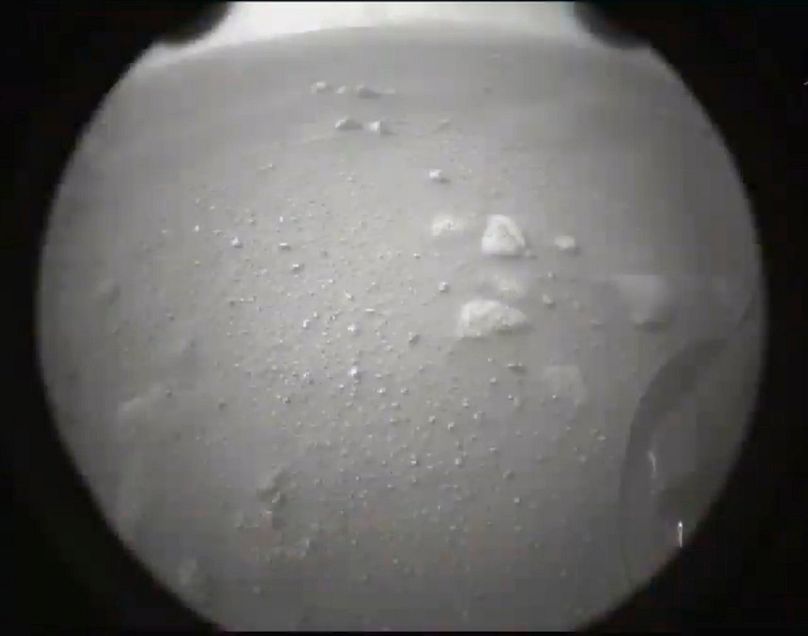The Perseverance rover arrived on Mars on Thursday as part of a mission to uncover signs of ancient life and collect samples of rock
"Touchdown confirmed!"
The two words at mission control in California that signalled to the world that the six-wheeled probe Perseverance had successfully landed on Mars.
The NASA rover is there as part of a mission to uncover signs of life and collect samples of rock.
The more than €2 billion mission to the Red Planet launched in July 2020 and the rover landed in the Jezero Crater shortly before 10 pm CET on Thursday.
You can watch the landing in the video player, below.
The landing of the six-wheeled vehicle marks the third visit to Mars in just over a week. Two spacecraft from the United Arab Emirates and China swung into orbit around the planet on successive days last week.
All three missions lifted off in July to take advantage of the close alignment of Earth and Mars, travelling some 300 million miles in nearly seven months.
The 2,300-pound Perseverance is NASA's most advanced rover to date. It is equipped with 19 cameras, an instrument that can provide imaging, chemical composition analysis and mineralogy at a distance, and five samples of spacesuit materials to test whether they can withstand the planet's radiation. This will help space agencies prepare for a possible future human mission to Mars.
A 1.8-kg helicopter named Ingenuity has also hitched a ride on Perseverance. It is the first aircraft to fly in a controlled way on another planet and its key objective is to demonstrate powered flight in the atmosphere of Mars which is only 1 per cent as thick as that of Earth and where gravity is lower.
Perseverance's descent has been described by NASA as "seven minutes of terror," in which flight controllers can only watch helplessly. The preprogrammed spacecraft was designed to hit the thin Martian atmosphere at 12,100 mph (19,500 kph), then use a parachute to slow it down and a rocket-steered platform known as a sky crane to lower the rover the rest of the way to the surface.
Thursday's touchdown was the ninth spacecraft to successfully land on Mars, every one of them from the US, beginning in the 1970s.
Mars has proved a treacherous place: In the span of fewer than three months in 1999, a US spacecraft was destroyed upon entering orbit because engineers had mixed up metric and English units, and an American lander crashed on Mars after its engines cut out prematurely.
The only way to confirm — or rule out — signs of past life is to analyse the samples in the world’s best labs. Instruments small enough to be sent to Mars wouldn’t have the necessary precision.
"The Mars sample return project is probably the most challenging thing we’ve ever attempted within NASA,” said planetary science director Lori Glaze, “and we don’t do any of these things alone."
NASA is teaming up with the European Space Agency to bring the rocks home.
The ESA will provide a relay rover to collect the rock samples from Perseverance and carefully store them in a Mars Ascent Vehicle that will launch the sample container into orbit around Mars where it will be picked up by the ESA's Earth Return Orbiter for a return to our shores.












